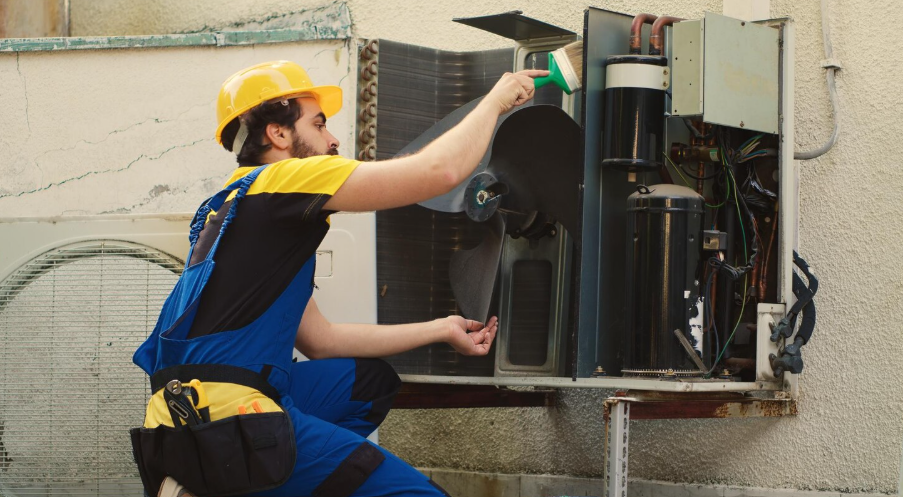Do You Really Need an Annual HVAC Tune-Up? Here’s What Experts Say

Many homeowners debate whether an annual HVAC tune-up is really necessary or just an extra expense. It’s a fair question, after all, your system may seem to be running fine, and skipping service for a year or two might not cause immediate problems. But experts emphasize that HVAC systems are complex machines, and like any equipment with moving parts, they need routine care to perform at their best.
Think of it like car maintenance: you wouldn’t drive your vehicle for years without an oil change or brake check. Your heating and cooling system works just as hard, often running for thousands of hours a year, yet many homeowners overlook it until something breaks down. The result? unexpected repair bills, higher energy costs, and shortened equipment life.
Annual tune-ups are designed to catch small issues early, before they lead to breakdowns in the middle of a summer heatwave or a winter cold snap. Dirty coils, clogged filters, loose electrical connections, or refrigerant leaks may not stop your system today, but over time they reduce efficiency, strain components, and increase the risk of costly failures. Regular service also improves safety by checking for carbon monoxide leaks, faulty gas burners, and electrical hazards.
That’s why HVAC professionals consider annual maintenance one of the smartest investments you can make. It’s not just about preventing repairs, it’s about maximizing comfort, keeping energy bills manageable, and protecting the long-term health of your system.
Why Annual HVAC Tune-Ups Matter
Just like your car needs routine servicing, your HVAC system benefits from regular inspections and adjustments. A yearly tune-up helps:
- Catch small issues before they become costly repairs
- Keep energy bills lower by improving efficiency
- Ensure safety checks on gas and electrical components
- Extend the lifespan of your furnace or AC unit
For those new to HVAC terms, it can help to review a guide like common HVAC terms explained for homeowners so you know exactly what technicians are checking during a tune-up.
What Technicians Check During a Tune-Up
An annual tune-up may only take an hour or two, but the checklist is detailed and highly technical. Each step targets parts of the system that directly impact efficiency, safety, and performance. Here’s a closer look at what’s typically included:
- Cleaning coils and blower components
Dirt and dust on evaporator and condenser coils act like insulation, blocking heat transfer. This forces your system to run longer, using more energy to cool or heat the home. A thorough coil cleaning can restore lost efficiency, sometimes reducing energy consumption by 10–15%. The blower wheel is also cleaned to improve airflow and prevent motor strain. - Checking refrigerant levels
Too much or too little refrigerant reduces efficiency and puts stress on the compressor, the most expensive part of your AC. Technicians measure superheat and subcooling values to ensure refrigerant charge is within manufacturer specs, preventing premature failure. - Inspecting gas lines, burners, and ignition
On heating systems, gas leaks, dirty burners, or a failing ignition sequence can create serious safety risks. A tune-up includes leak detection, cleaning burners for proper combustion, and ensuring the ignition cycle starts reliably every time. - Testing safety controls and thermostat calibration
Safety switches shut down the system if dangerous conditions arise, like overheating or blocked airflow. Technicians test these controls and recalibrate the thermostat so it reads temperature accurately, keeping your home comfortable without wasted energy. - Clearing condensate drains
High-efficiency furnaces and air conditioners produce condensation. If the drain line clogs, water can back up and damage floors, insulation, or electrical components. Clearing and flushing the line prevents costly water damage and mold growth. - Measuring airflow and static pressure
Proper airflow is critical. Too much restriction (from dirty filters, undersized ducts, or blocked vents) makes the system strain. Technicians measure static pressure across the blower to spot hidden airflow issues, improving efficiency and extending equipment life.
Together, these steps may seem minor, but they add up to significant benefits. A well-tuned HVAC system runs smoother, lasts longer, and avoids many of the breakdowns that catch homeowners off guard during the hottest or coldest days of the year.
Energy Efficiency and Indoor Air Quality
A well-maintained HVAC system doesn’t just save you money, it also improves the air you breathe. Clean filters, clear coils, and properly adjusted airflow reduce dust and allergens inside your home. In a city like Toronto, where smog and seasonal air quality issues can impact comfort, understanding how Toronto’s air quality affects your HVAC system is an important part of the picture.
Routine maintenance also ensures your system can handle humidity control more effectively, which is key for both comfort and protecting wood floors, furniture, and even electronics.
When Should You Book a Tune-Up?
Most experts recommend scheduling service twice a year, once in spring for cooling and once in fall for heating. But at the very least, one annual tune-up is critical to keep warranties valid and prevent mid-season breakdowns.
If your system is already struggling to keep up in the summer heat, it may be worth considering whether an upgrade to a modern, high-efficiency air conditioner is a smarter long-term solution.
So, do you really need an annual HVAC tune-up? According to experts, the answer is yes. Routine maintenance reduces breakdowns, lowers energy bills, and protects your investment. Skipping service may save money upfront, but in the long run, it often costs far more in repairs and inefficiency.
